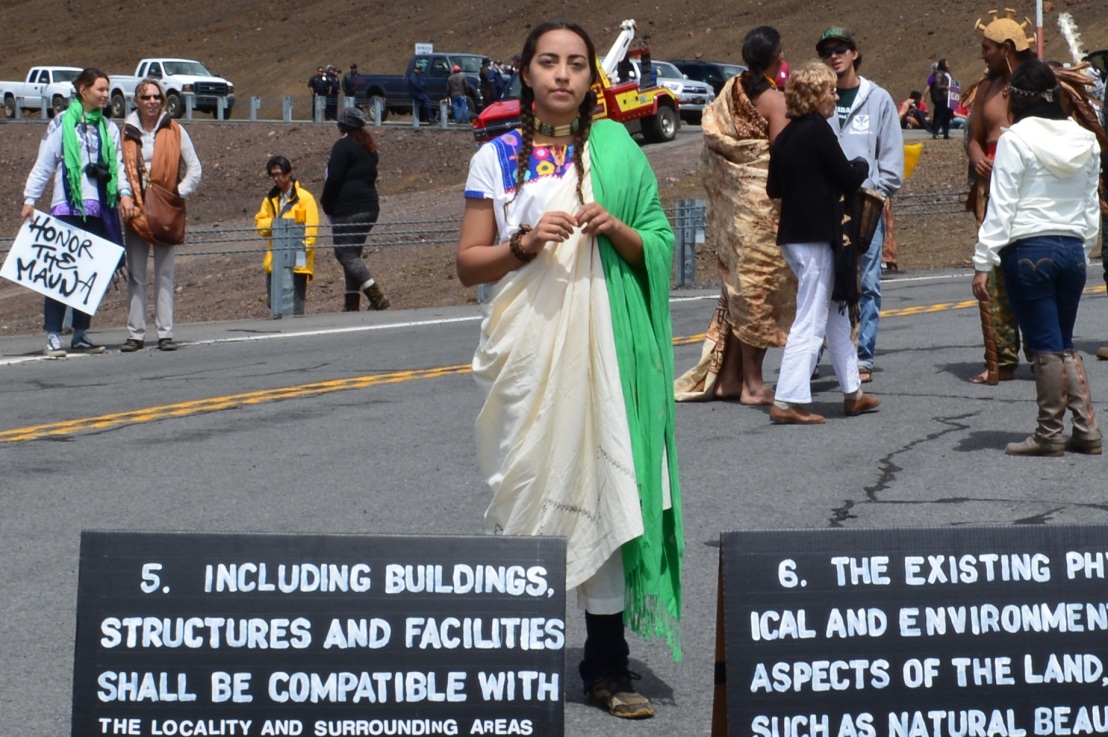My finalized focus question is: How does Native Hawaiian activism succeed/fail at mobilizing public support? Therefore, in order to properly answer this question I need to gain more information about the theory behind public support, general activism, and indigenous environmentalism. Stern (1999) talk about three types of support people can provide: citizenship actions, policy support, and personal behavior. It would be interesting to look at the methodology of mobilizing support for my three case studies (Military Bomb Testing on Kaho’olawe, Pele Defense Fund and Resistance to Geothermal Energy, and Resistance to the TMT), and examine what kind of support these movements are looking for. Furthermore, it is sometimes true that movements can embody qualities of strategic essentialism to mobilize support. Eide (2010) talks about how essentialism can be used to appeal to certain audiences by means of empathy and cultural importance. This type of methodology can be frequent when tackling indigenous issues because it can be a way to gain support from others outside of the community (sometimes by playing up certain qualities of peoples)
For my methodology, I plan on creating dynamic concept maps that utilize actor-network theory to construct my thoughts and observations. Although I do have preliminary concept maps, I need to collect more information on actor network theory and concept maps in general in order provide justification for my methodology. Novak and Canas (2006) talk about how the emphasis and goal of concept mapping is to better understand the connections between different actors and processes. Specifically, unlike other methods of mapping, the focus isn’t necessarily on the actors themselves, but on the words connecting them. Concept maps provide a good opportunity to recognize patterns that would not be evident simply through reading about a situation. Furthermore, Karpicke and Blunt (2011) provide a counterargument that acknowledges that without understanding of the theory behind cmapping it may not be the most beneficial methodology. It is important to understand the biases and shortcomings of any method, that way I can research ways to avoid this and potentially fill in any gaps. Latour (1996) talks about how actor network theory (ANT) brings together common aspects of many networks and situations and thus is able to contextualize patterns.
I also am working to collect more primary sources about the methodologies of these activist groups. Specifically, I am gathering photographs, and later newspaper excerpts, audio clips, news articles, etc. In the case of the Pele Defense Fund and Resistance to Hawai’i Geothermal Project they in fact released a national ad campaign that was dispersed on newspapers throughout the country. This ad was able to garner support from many national environmental organizations, such as the Sierra Club and the Sierra Club Defense Fund. I am trying to locate this ad by researching in archives of some newspapers it was put into (Honolulu Advertiser, San Francisco Chronicle, etc.). I have began to make a folder on Google Drive, dedicated to primary sources (particularly photographs and videos). I have a parent folder then one individual folder for each of my case studies.
The previous week I was able to present the above work and preliminary results of my thesis at Lewis & Clark’s annual Ray Warren Symposium on Race and Ethnic Studies. After my presentation an audience member offered to connect me with a KIRC (Kaho’olawe Island Reserve Commission) employee. Lyman Abbott works for KIRC and takes frequent visits to Kaho’olawe to work on restoration and conservation. Abbott also has connections to Protect Kaho’olawe Ohana founding members, including Walter Ritte. Abbott has a lot of knowledge and expertise regarding the ecological effects of the US Navy’s bomb testing. I plan on drafting a list of a few questions and emailing them to Abbott who will respond in the next week most likely. Abbott will be able to provide a first hand account of the ecological impact colonial legacies can have on the environment. I expect to use the information from this informal email interview in my situated context; it will help to give me more insight and background information (including motivation) as to why the case of Kaho’olawe is valuable to study. Here are some of the questions I plan on asking Lyman Abbott. I hope to get more insight as to the long standing effects of human occupation. Diamond (1994) discusses how it is difficult for ecosystems to recover from human influence, both referencing when Hawaiians arrived on Kaho‘olawe in addition to when the military began bomb testing.
-How has Kaho‘olawe (Kanaloa’s) history as a site of US Navy bomb testing affecting indigenous plants and wildlife? What are some of the effects that can still be witnessed today?
-What are some of the top priorities of KIRC’s restoration work?
-On the KIRC website it discusses biosecurity and preventing IAS (invasive alien species). Can any of the IAS being eradicated be tied back to the military’s occupation and testing? If so, which IAS?
-Is there a prospective timeline or estimate for how restoration work of the island will move forward/be completed? (trying to speak to the long-standing effects of environmental changes)
New Sources:
Diamond, Jared. “Ecological Collapses of Past Civilizations.” Proceedings of the American Philosophical Society 138, no. 3 (1994): 363–70.
Eide, Elisabeth. “Strategic Essentialism and Ethnification.” Nordicom Review 31, no. 2 (November 1, 2010): 63–78. https://doi.org/10.1515/nor-2017-0130.
Karpicke, J. D., and J. R. Blunt. “Retrieval Practice Produces More Learning than Elaborative Studying with Concept Mapping.” Science 331, no. 6018 (February 11, 2011): 772–75. https://doi.org/10.1126/science.1199327.
Latour, Bruno. “On Actor-Network Theory: A Few Clarifications.” Soziale Welt 47, no. 4 (1996): 369–81.
Novak, Joseph D, and Alberto J Cañas. “The Theory Underlying Concept Maps and How to Construct and Use Them,” n.d., 36.
Stern, Paul C, Thomas Dietz, Troy D Abel, Gregory A Guagnano, and Linda Kalof. “A Value-Belief-Norm Theory of Support for Social Movements: The Case of Environmentalism.” Human Ecology Review 6, no. 2 (1999): 18.
